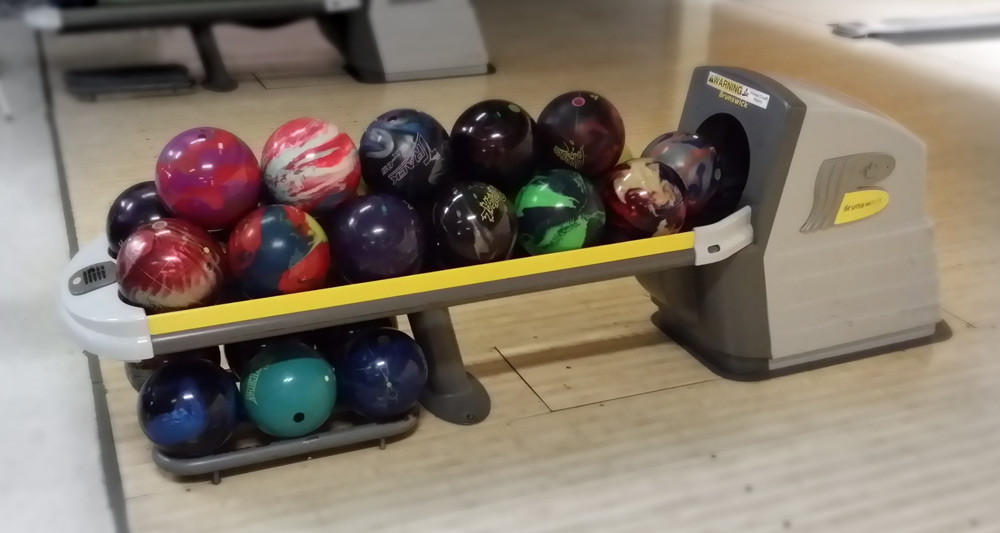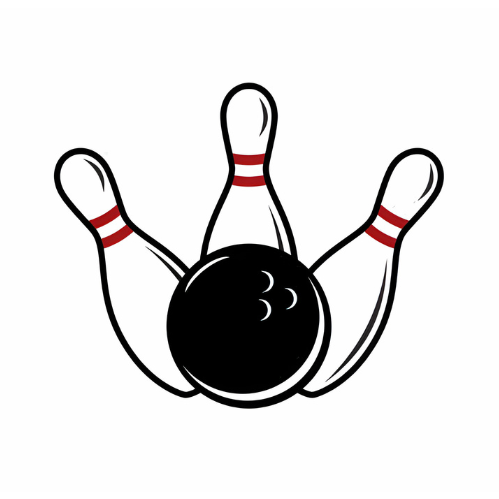Bowling lanes are primarily categorized into two types: wood and synthetic. Each type affects the ball’s movement and bowler’s strategy differently.
Bowling is an enduring sport with various playing surfaces known as lanes. Historically, lanes were constructed from hardwood maple and pine, offering a unique feel and reaction to the bowling ball. However, advancements in technology have led to the development of synthetic lanes.
These newer lanes combine durable materials like high-pressure laminates or phenolic resins, designed to mimic wooden lanes while providing greater consistency and longevity. Bowlers often adjust their techniques to accommodate the nuances of each lane type, from the oil pattern to the surface texture.
Selecting the appropriate bowling ball and understanding the lane conditions are critical components for achieving the best game performance, whether it’s on the traditional warmth of wood or the modern sleekness of synthetics. Understanding the characteristics of these lanes is essential for competitors at all levels, from casual participants to professional athletes.

Introduction To Bowling Lane Surfaces
Did you know bowling lanes are not all the same? The type of surface affects how the ball moves. This is key for bowlers of all levels. Fans of bowling, get ready to learn about different bowling lane surfaces.
Overview Of Bowling Lane Characteristics
Lanes have unique features that can change the game. Here are some things that make each lane special:
- Materials: Lanes might be wood or synthetic.
- Conditioning: Oils are applied differently on lanes.
- Wear and Tear: Older lanes behave differently from new ones.
Importance Of Lane Surface Types In Bowling Performance
Different surfaces impact your bowling. They can make the ball spin or slide more. This can change your score a lot. Here’s why lane surfaces matter:
- Spin Control: The right surface helps control your spin.
- Speed: Some lanes let the ball go faster.
- Consistency: Knowing the lane helps you play the same every time.
Material Matters: Common Bowling Lane Surfaces
When you step into a bowling alley, you’re walking on history or technology. The surface beneath your feet affects your game more than you may realize. Let’s explore the two main materials used for bowling lanes and see how they shape the way we play.
Traditional Wood Lanes: A Nostalgic Choice
The warmth of a classic wooden lane is a feel many bowlers love. These lanes have been around since the beginning of bowling. Crafted from hard maple and pine, these lanes bring a sense of nostalgia. Wood lanes require regular maintenance to stay in top form. This means sanding and refinishing to keep them smooth.
- Beautiful wood grain patterns
- Regular oiling important for lane protection
- Preferred by traditionalists for their unique bowling experience
Modern Synthetic Lanes: Advancing The Game
Synthetic lanes are today’s game-changer. Made from high-tech materials, they mimic wood but offer greater durability. These lanes typically have a layered construction. The surface looks like wood but stands up to more games with less wear. Easy to care for, synthetics offer a consistent playing field for bowlers of all levels.
- Less maintenance than wood
- Consistent performance across the lane
- Favored in competitive bowling environments
Comparing Wood And Synthetic Surfaces: Pros And Cons
| Material | Pros | Cons |
|---|---|---|
| Wood |
|
|
| Synthetic |
|
|
As you see, wood lanes boast tradition but need care. Synthetic lanes offer consistency and are cost-effective over time. Both types have their own charm. It comes down to personal preference and the bowling experience you seek.
Selecting The Right Surface For Your Venue
Choosing the correct bowling lane surface can make all the difference. It affects the game, maintenance, and user satisfaction profoundly. This guide aims to help venue owners pick the perfect lane surface.
Considerations For Bowling Alleys And Sports Centers
When selecting a lane surface, vital factors need attention:
- Foot traffic: How many players will it serve daily?
- Player demographics: Are they seasoned players or casual bowlers?
- Climate factors: Is the venue in a region with extreme weather that could affect the lanes?
Impact On Maintenance And Durability
Surface choice dictates maintenance levels and overall lifespan. Hardwood lanes, for instance, require regular sanding and finishing. Synthetic lanes, on the other hand, are more robust and demand less upkeep.
A good maintenance routine is:
- Cleaning daily to remove lane oil and debris
- Inspection for wear and tear
- Resurfacing at set intervals, depending on lane material
Choosing A Surface Based On Bowler Experience Level
A beginner-friendly surface encourages new bowlers and helps grow the sport. Veteran bowlers prefer lanes offering consistency and the ability to put a spin on the ball.
Lane types:
| Level | Surface Type |
|---|---|
| Beginners | Softer, more forgiving surfaces like synthetic |
| Professionals | Harder surfaces like traditional wood |

Credit: en.wikipedia.org
How Lane Surfaces Affect Bowling Techniques
Bowling lanes vary and can change the game significantly. A bowler’s approach and style might work well on one surface, but not another. This forces bowlers to understand how different lane surfaces affect their techniques. Different materials and oil patterns on lanes change how the ball behaves. Mastery involves adapting to these conditions.
Adapting Your Bowling Style To The Lane Condition
Observing the lane’s behavior is key to adapting your style. You might need smoother throws or sharper angles depending on the surface. On slick lanes, a straighter, more controlled approach could prevent sliding. Conversely, on high-friction lanes, you can play with more spin and speed.
Equipment Considerations: Bowling Balls And Shoes
Choosing the right gear is crucial. Here’s a quick guide to help:
- For slick lanes: Use a ball with higher friction and grip.
- For dry lanes: Opt for a smoother ball surface.
Bowling shoes impact your slide and stability. Find a pair that complements the lane’s conditions for optimal performance.
The Role Of Lane Oil Patterns In Performance
Lane oil patterns dictate the ball’s reaction on the surface. Patterns range from basic to complex and professional bowlers often read these patterns to decide their strategy. For consistent delivery, learn to spot and adjust to different oil pattern designs.
Maintaining And Caring For Different Lane Types
Proper upkeep of bowling lanes keeps the game rolling smoothly. Different surfaces require unique maintenance routines. Always ensure longevity and peak performance. Different lanes demand special attention. Let’s delve into these differences.
Routine Maintenance Practices For Longevity
Maintaining bowling lanes involves daily and weekly procedures. They bolster longevity and enhance player experience.
- Clean lanes daily to remove oil and debris.
- Inspect gutters and caps regularly for wear.
- Use lane machines to apply conditioner evenly.
- Check approach areas for stickiness or slip.
Resurfacing And Conditioning: Wood Vs Synthetic Approaches
| Surface Type | Resurfacing Interval | Conditioning Method |
|---|---|---|
| Wood Lanes | 3-5 years | Sanding and sealing |
| Synthetic Lanes | 5-7 years | Buffing and recoating |
While wood lanes need frequent sanding, synthetics are more forgiving. Both types require specific conditioners to optimize ball movement.
Professional Tips For Lane Preservation
- Invest in quality cleaning products designed for your lane type.
- Adhere to a regular maintenance schedule.
- Consult professionals for resurfacing projects.
- Train staff on proper equipment use to avoid damage.
Properly trained employees are vital for optimal lane care. Always prioritize professional advice for specific maintenance tasks.
The Future Of Bowling Lane Technology
The world of bowling is about to roll into the future with cutting-edge lane technology. Advances in materials and design are paving the way for an experience unlike any other. High-tech lanes promise to transform the sport while being kind to our planet. Let’s dive into what’s coming.
Innovative Material Developments
Tomorrow’s lanes will boast revolutionary materials that enhance game play. With a focus on performance, these materials promise a smoother glide and a more consistent roll. Here’s a sneak peek:
- Super Synthetic Surfaces: More durable and less prone to warping.
- Nano-Technology Coatings: Increased resistance to scratches and scuffs.
- Responsive Lighting: Embedded LEDs that react to ball motion.
Environmental Considerations In Lane Manufacturing
The bowling industry takes a swing at sustainability. Manufacturers now prioritize eco-friendly practices. This shift ensures a greener game:
- Recycled Materials: Lanes created from reused content.
- Low-VOC Finishes: Safer coatings that protect air quality.
- Energy-Efficient Lane Machines: Use less power for lane conditioning.
Predictions For Next-gen Bowling Surfaces
We can expect exciting changes to the way we bowl. Here are some predictions for the lanes of the future:
- Interactive Displays: Scores and animations right on the lane.
- Variable Texture Control: Alter lane friction with a button press.
- Smart Monitoring Systems: Real-time data on lane conditions.

Credit: www.bowlingthismonth.com
FAQ
What Are The Different Bowling Lane Surfaces?
Bowling lanes feature various surfaces, including traditional wood, synthetic overlays, and high-friction urethane materials. Each surface affects ball behavior and maintenance requirements.
What Is The Difference Between Amf And Brunswick Lanes?
AMF and Brunswick lanes differ primarily in their approach to technology and design. AMF lanes often feature advanced automation systems, while Brunswick lanes are known for durable materials and innovative pinsetter designs. Each brand brings unique qualities to the bowling experience.
What Is The Difference Between Wood And Synthetic Bowling Lanes?
Wood bowling lanes offer a traditional feel with more friction, affecting ball roll. Synthetic lanes are harder and more durable, providing a consistent, smoother surface for play.
Are There Different Types Of Bowling?
Yes, several types of bowling exist, including ten-pin, nine-pin, candlepin, duckpin, and five-pin bowling. Each variant offers unique rules and pin setups.
Conclusion
Navigating through the variety of bowling lanes enhances your game experience. Whether on sleek synthetic tracks or classic wooden ones, each type offers unique challenges. Remember, the right lane can elevate your play. So, next time you bowl, consider the lane type—it might just be the key to your strike.
